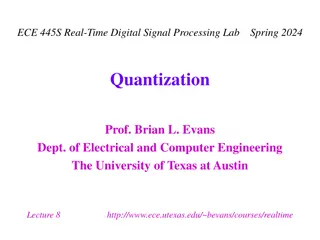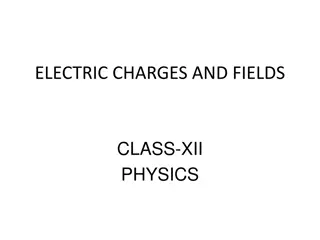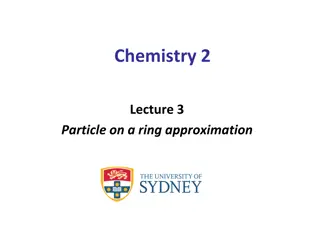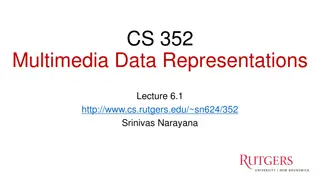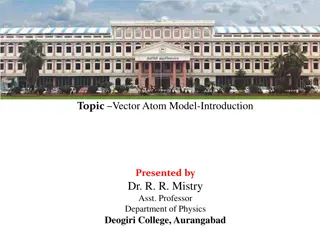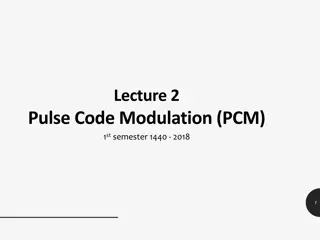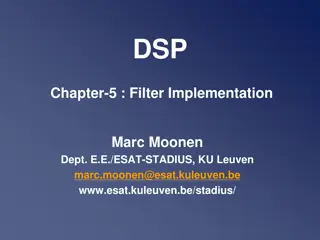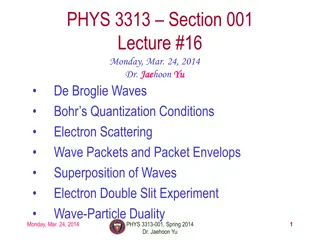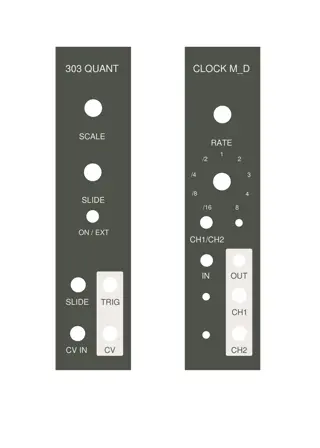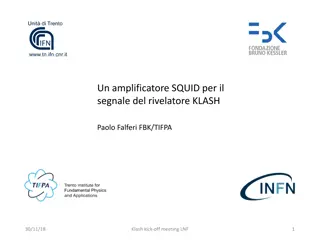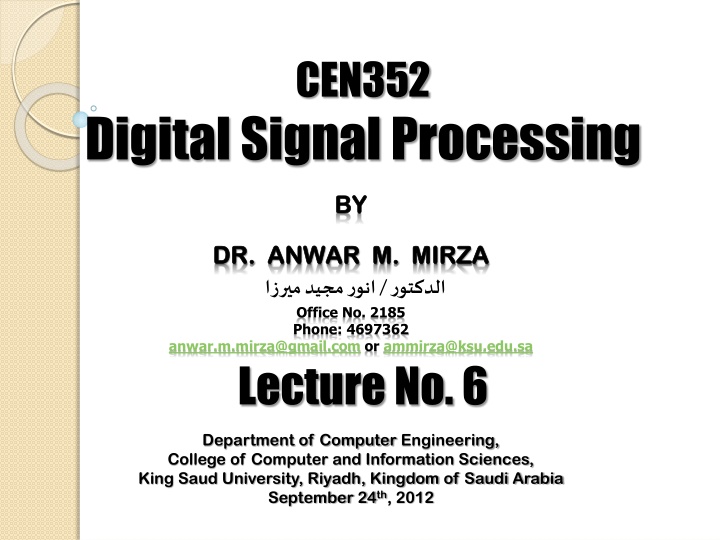
Digital Signal Processing and Quantization Concepts
Explore the fundamentals of digital signal processing and quantization, where analog signals are converted into digital signals through finite precision representation. Learn about quantization error and noise, along with examples illustrating quantization techniques using truncation and rounding.
Download Presentation

Please find below an Image/Link to download the presentation.
The content on the website is provided AS IS for your information and personal use only. It may not be sold, licensed, or shared on other websites without obtaining consent from the author. If you encounter any issues during the download, it is possible that the publisher has removed the file from their server.
You are allowed to download the files provided on this website for personal or commercial use, subject to the condition that they are used lawfully. All files are the property of their respective owners.
The content on the website is provided AS IS for your information and personal use only. It may not be sold, licensed, or shared on other websites without obtaining consent from the author.
E N D
Presentation Transcript
CEN352 Digital Signal Processing BY BY DR DR. . ANWAR ANWAR M M. . MIRZA MIRZA / Office No. 2185 Phone: 4697362 anwar.m.mirza@gmail.com or ammirza@ksu.edu.sa Lecture No. 6 Department of Computer Engineering, College of Computer and Information Sciences, King Saud University, Riyadh, Kingdom of Saudi Arabia September 24th, 2012
Quantization A digital signal is a sequence of numbers (samples) in which each number is represented by a finite number of digits (finite precision i.e. finite number of digits). The process of converting a discrete-time continuous-amplitude signal into a digital signal by expressing each sample value as a finite (instead of an infinite) number of digits is called quantization. The error introduced in representing the continuous-valued signal by a finite set of discrete value levels is called quantization error or quantization noise. 2
Analog signal Quantization: Example 3
Analog signal Discrete-time signal Quantization: Example Table: Numerical Illustration of Quantization with One Significant Digit using Truncation or Rounding Discrete-time signal 1 0.9 0.81 0.729 0.6561 0.59049 0.531441 0.4782969 0.43046721 0.387420489 (Truncation) (Rounding) (Rounding) 0 1 2 3 4 5 6 7 8 9 4
Analog signal Discrete-time signal Quantization: Example 5
Analog signal Discrete-time signal Quantization: Example 6
Analog signal Discrete-time signal Quantization: Example Table: Numerical Illustration of Quantization with One Significant Digit using Truncation or Rounding Discrete-time signal 1 0.9 0.81 0.729 0.6561 0.59049 0.531441 0.4782969 0.43046721 0.387420489 (Truncation) 1.0 0.9 0.8 0.7 0.6 0.5 0.5 0.4 0.4 0.3 (Rounding) 1.0 0.9 0.8 0.7 0.7 0.6 0.5 0.5 0.4 0.4 (Rounding) 0 1 2 3 4 5 6 7 8 9 7
Analog signal Discrete-time signal Quantization: Example 8
Analog signal Discrete-time signal Quantization: Example Table: Numerical Illustration of Quantization with One Significant Digit using Truncation or Rounding Discrete-time signal 1 0.9 0.81 0.729 0.6561 0.59049 0.531441 0.4782969 0.43046721 0.387420489 (Truncation) 1.0 0.9 0.8 0.7 0.6 0.5 0.5 0.4 0.4 0.3 (Rounding) 1.0 0.9 0.8 0.7 0.7 0.6 0.5 0.5 0.4 0.4 (Rounding) 0.0 0.0 -0.01 -0.029 0.0439 0.00951 -0.031441 0.0217031 -0.03046721 0.012579511 0 1 2 3 4 5 6 7 8 9 9
Given an analog signal x(t) and the number of bits m in an ADC Quantization: How it done? Find out the number of quantization levels: L=2m Find out the step size of the quantizer: = (xmax xmin)/L The index corresponding to the binary code is: i = round(x xmin)/ Values of the quantization levels: xq = xmin + i , where i=0,1,2, ,L 10
Assuming that a 3-bit ADC channel accepts analog input ranging from 0 to 5 volts, determine the following: a. Number of quantization levels b. Step size of the quantizer or resolution c. Quantization level when the analog voltage is 3.2 volts d. Binary code produced by the ADC Solution In this case xmin = 0 volts, xmax = 5 volts and m = 3 bits. Part(a): The number of quantization levels are given by L=2m = 23 = 8. Part (b): Step size is given by = (xmax xmin )/L = (5 0)/8 = 0.625 volts Part(c): The index to the quantization level is given by i = round((x xmin)/ ) = round((3.2 0)/0.625) = round(5.12) = 5 Therefore, the quantization level for analog voltage 3.2 volts is xq = xmin + i* = 0 + 5 * 0.625 = 3.125 Part (d): The 3-bit binary code corresponding to level 5 is 101. Quantization: Example 2.9 11
Signal to Quantization Noise The error introduced by the quantization process is given by The signal to quantization noise ratio (SQNR or simply SNR) is given by Quantization The signal to quantization noise ratio (SQNR or simply SNR) in decibels (dB) is given by 12

